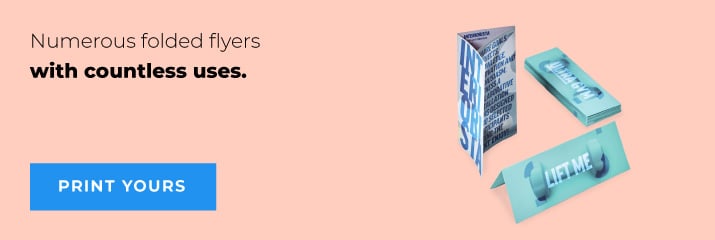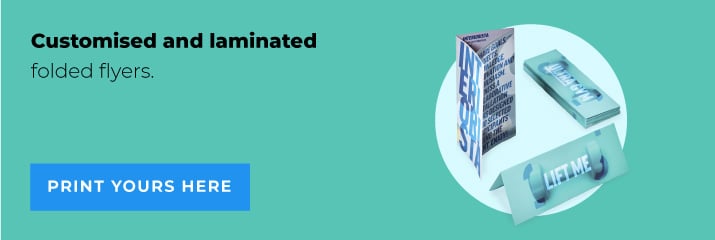Table of Contents
Your brochure is left on the desk of a potential client after a business meeting or, if you’re attending a trade fair, in their hands after they’ve stopped at your stand. Then the road forks: it could either be opened and read or consigned to the waste-paper bin. Its destiny depends largely on how it is created.

We’re not going to explain which software to use to create your company brochure or what to write in it, because that’s the job of the graphic designer and copywriter. Instead, we’ll go through everything you should expect from a well-made brochure, so you can recognise a good job when you see it. And we’ll also give you examples of other company brochures, so when you meet the graphic designer in charge of creating yours, you can have a clearer idea of what you’d like.What is a brochure, and what is it for?
A company brochure is your firm’s business card, and it plays a very important role: it showcases your business to potential customers. So what should you write about in it? Simple – who you are, what you do, how you do it and what your strong points are. These can all be described using both words and visual design, which in a brochure go hand-in-hand, with two objectives: to communicate clearly and to convey your company’s identity.
Brochures tend to be handed out at business meetings and, more frequently, at trade fairs or conferences. In other words, they are browsed in situations where people are being bombarded by lots of different stimuli. It is therefore crucial to grab the attention of the person holding the brochure and spark their curiosity, to ensure they read it from beginning to end.
How to create an effective brochure
Since brochures play such an important role, it is essential that you turn to a professional to produce them. So, in case you were wondering, no, you can’t design a brochure by yourselves using software like Word or PowerPoint, and no, you can’t suddenly call yourselves copywriters and write the texts yourself. For professional results, you need the eye of a designer and the hand of a copywriter. Working alongside them, you should:
- Set the objectives you want to achieve with your brochure, because these will have a bearing on the text and design.
- Establish who the brochure is aimed at, and to which audience it needs to speak.
- Think about the context in which it will be used. For example, if you are sponsoring an event and your brochure will be handed out to attendees along with countless others, it’s important that you stand out with a sophisticated design that is out of the ordinary in some way.
Let’s have a look at the features a company brochure should have, both in terms of copy and visual design.
Copywriting tips
Brochures that talk too much about the company and think too little about the reader are all too common. Given that space is finite, reading time is short and the reader’s attention is limited, it’s important to concentrate more on “what I can do for you” and less on “look how brilliant I am”. In other words, readers are not interested in learning that you are “the leader in the industry” – they want to know how you can respond to their needs, and why you can do it better than the rest. You therefore need to ask yourself why they should choose you. Focus on your unique selling points, on the things that distinguish you from the competition, and you will be remembered and, hopefully, chosen.
Having established this, here are some more practical things to consider:
- The title of the brochure need not simply be the name of the company. To be effective, a title should meet the needs of a potential client, arousing their curiosity with a provocative question or even inviting them to flick through the brochure with a call to action.
- Clarity and succinctness. A good copywriter will be able to provide you with clear, concise and effective text. This is important, because it is difficult to attract the reader’s attention, and easy to lose it. Don’t try to fit every last fact about your company into your brochure: limit yourself to the essentials, and perhaps add a QR code.
- Tone of voice. Because your brochure is your firm’s business card, it needs to speak in the business’ tone of voice. The person writing the text needs to understand the company’s personality to be able to communicate coherently. If you have a style guide, give it to the copywriter.
Design tips
The time spent on the design has a large part to play in whether or not a brochure is successful. An effective cover will attract people’s attention and pique their curiosity, and an attractive layout will encourage people to stop at a certain page and read the content. A neat, formal style, simplicity and clarity are all essential.
Images require special thought. You could provide the designer with original photographs, or let them choose stock images for you or design bespoke graphics: the decision made must match the style of your communications. If you provide the graphic designer with images, they should be high-resolution, striking and genuinely useful, in other words, they should communicate something important. Filling your brochure with pointless images will only make it seem confused and hard to read.
The colours used in the brochure should be consistent with your business’ colour palette. You could adapt your brochure to match the colours of a trade fair you’re attending, but it’s a good idea to feature at least one of the colours that represent you, to make sure you are always recognisable. In general, go for bright colours that will stand out and draw people in, even amongst countless other brochures.
When it comes to typography, if your company prefers to use certain fonts, you should make them available to the graphic designer. However, you don’t always have to use your own fonts. Consider, for example, a company that produces pens sponsoring an event dedicated to writing for children. In this case, the design of the communication materials could justifiably be adapted to the context by choosing a playful, calligraphy-based font.

The size of the brochure should be agreed with the designer. If, for example, the brochure will be taken to a trade fair, we recommend avoiding large sizes, so people can easily slip them into their bag or pocket: your aim is for them to take the brochure home and read it at their leisure. If, on the other hand, the brochure is to be left on a client’s desk, you could opt for larger formats.Some examples of brochures for inspiration
It’s a good idea to have a vague idea of what you want from your brochure before you meet the graphic designer who will create it, then discuss it together. This will speed up the process and ensure you achieve your desired result more easily. A good technique is to search for examples of brochures online or pick up the brochures you like at events. We’ve made a start for you, by assembling various styles of company brochures.
From the simplest folded or stapled designs, to more sophisticated versions, with hardback covers and cases.
To more sophisticated versions, with hardback covers and cases:
Incorporating Augmented Reality (AR) in Brochure Design
Incorporating Augmented Reality (AR) into your company brochure can significantly enhance user engagement and create an immersive experience for readers. By integrating AR elements, you can offer interactive content that goes beyond the static pages of a traditional brochure. Here’s how you can effectively incorporate AR into your brochure design:
Interactive Product Demonstrations
Imagine a potential customer flipping through your brochure and coming across a product they are interested in. Instead of merely reading about its features, they can use their smartphone to scan a designated AR marker on the page. This action could trigger a 3D model of the product to appear on their screen, allowing them to interact with it in a virtual space. They can rotate, zoom in, and view the product from all angles, providing a comprehensive understanding of its features and benefits.
Virtual Tours and Experiences
For businesses such as real estate, hospitality, or event planning, AR can offer virtual tours that give potential clients a realistic preview of properties, venues, or event setups. By scanning specific images or icons within the brochure, readers can embark on a virtual walkthrough, experiencing spaces as if they were physically there. This immersive approach can be a game-changer in conveying the ambiance and details of a location, helping clients make informed decisions without the need for an initial site visit.

Additional Multimedia Content
Enhance your brochure with multimedia elements such as videos, audio clips, or slideshows that provide deeper insights into your products or services. For instance, a fashion brand could include an AR feature where scanning a clothing item in the brochure brings up a video of a model wearing that item on a runway. Similarly, a tech company could offer tutorials or customer testimonials that play when a reader scans certain sections, adding an extra layer of information and engagement.
Personalized Customer Interaction
AR allows for personalized interactions that can make your brochure feel more like a tailored experience. For example, a financial services company could include an AR element where clients can input their details and receive a personalized financial plan or investment advice. This kind of interactive, personalized content can make your brochure stand out and provide real value to your customers.
Easy Implementation and Accessibility
Integrating AR into your brochure design doesn’t have to be complex or expensive. Many platforms and tools are available that make the creation of AR content accessible even for small businesses. Ensure that your AR features are easy to use and accessible to a wide audience by providing clear instructions within the brochure on how to access and use the AR elements. This can include simple steps such as downloading an app or using a built-in QR code scanner on their smartphones.
In conclusion, incorporating AR into your company brochure can transform it from a simple marketing tool into an interactive experience that captivates your audience. By leveraging AR technology, you can provide dynamic content that engages users, conveys information more effectively, and sets your brochure apart from the competition.
Good luck! Here’s hoping your brochure will be read from cover to cover.

